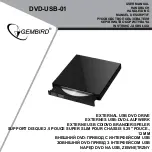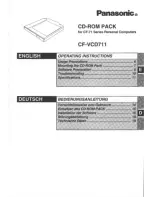
2-4
VLT is a registered Danfoss trademark
SEQUENCE OF OPERATION
Rectifier Section
When input power is first applied to the drive, it enters through
the input terminals (L1, L2, L3) and on to the disconnect or/
and RFI option, depending on the unit's configuration (see
Figure 2-4). If equipped with optional fuses, these fuses (FU1,
FU2, FU3) limit damage caused by a short circuit in the power
section. The SCRs, in the combined SCR/Diode modules,
are not gated so current can travel to the rectifier on the soft
charge card. In E1 drive models, the SCR and diode modules
are separate. Additional fuses located on the soft charge
card provide protection in the event of a short in the soft
charge or fan circuits. Three phase power is also branched
off and sent to the power card. It provides the power card
with a reference of the main supply voltage and provides a
supply voltage for the cooling fans.
During the charging process, the top diodes of the soft charge
rectifier conduct and rectify during the positive half cycle. The
diodes in the main rectifier conduct during the negative half
cycle. The DC voltage is applied to the bus capacitors through
the soft charge resistor. The purpose of charging the DC bus
through this resistor is to limit the high inrush current that
would otherwise be present.
Positive temperature coefficient (PTC) resistors located on the
soft charge card are in series with the soft charge resistor.
Frequent cycling of the input power or the DC bus charging
over an extended time can cause the PTC resistors to heat
up due to the current flow. Resistance of the PTC device
increases with temperature, eventually adding enough
resistance to the circuit to prevent significant current flow.
This protects the soft charge resistor from damage along with
any other components that could be damaged by continuous
attempts to charge the DC bus.
The low voltage power supplies are activated when the DC
bus reaches approximately 50 VDC less than the alarm voltage
low for the DC bus (see ratings tables in the introductory section
of this manual). The value for the low voltage alarm can be
found in the ratings tables in the introductory section of this
manual. After a short delay, an inrush enable signal is sent
from the control card to the power card SCR gating circuit.
The SCRs are automatically gated when forward biased,
acting, as a result, similar to an uncontrolled rectifier.
When the DC bus capacitors are fully charged, the voltage
on the DC bus will be equal to the peak voltage of the input
AC line. Theoretically, this can be calculated by multiplying
the AC line value by 1.414 (VAC x 1.414). However, since AC
ripple voltage is present on the DC bus, the actual DC value
will be closer to VAC x 1.38 under unloaded conditions and
may drop to VAC x 1.32 while running under load. For example,
a drive connected to a nominal 460 V line, while sitting idle,
the DC bus voltage will be approximately 635 VDC.
As long as power is applied to the drive, this voltage is present
in the intermediate circuit and the inverter circuit. It is also fed
to the Switch Mode Power Supply (SMPS) on the power card
and is used for generating all other low voltage supplies.
Summary of Contents for VLT series
Page 1: ...MOTION CONTROLS Service Manual VLT 4152 4652 VLT 5122 5602 VLT 6152 6652 VLT 8152 8652...
Page 8: ......
Page 20: ......
Page 32: ......
Page 41: ...2 9 VLT is a registered Danfoss trademark Figure 2 7 Inverter Section...
Page 58: ......
Page 96: ......
Page 152: ......
















































